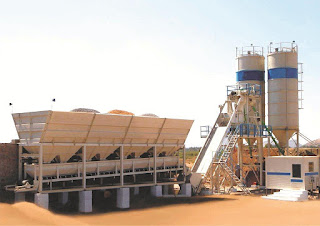Mixing fly ash in soil can help farmers increase production of crops and vegetables at a time when fertilizer costs are soaring. Researchers in CSIR - Advanced Material Process Research Institute (AMPRI) Bhopal have been involved in Research and Development programme for effective utilization of fly ash generated from thermal power stations.
All these were achieved based on physico-chemical, mineralogical, morphological and biological properties of ash and soil. We already know that, with the use of fly ash, we have seen cement-free concrete and wood substitute, but these experiments used limited amount of fly ash.
Fly ash as Fertilizer
Fly ash serves as a good fertilizer. Because, it has great potentiality in agriculture due to its efficacy in modification of soil health and crop performance. It provides the uptake of vital nutrients/minerals (Ca, Mg, Fe, Zn, Mo, S and Se) to crops and vegetation and can be considered as a potential growth improver.
Research proved that fly ash is a resourceful material and can be effectively utilized as soil modifier in large quantity and micro fertilizer in converting wasteland into agriculturally productive land. Best thing about fly ash is that, it retains water in ground and helps bacterial actions to take place to cultivate good quality of crops or vegetables.
Experiments and Testing
After several experiments and testing, the crop responded to various elements, mainly heavy metals grown in soil and fly ash were found to be within the permissible limits, no toxicity, meeting the food nutrition's and quality.
With fly ash application, edible yield of tomato, cabbage, potato, wheat, pea, onion, paddy, sunflower, maize etc were increased considerably as compared to the control soil where no fly ash was used.
Presently, fly ash has been used in agriculture in various parts of the country.
Conclusion:
There are several potential beneficial and few harmful effects of fly ash application in soil.
However, the effects of ash addition on soil health and crop productivity need to be established with long-term studies.
Fly Ash Brick Making Machine Manufacturers India
All these were achieved based on physico-chemical, mineralogical, morphological and biological properties of ash and soil. We already know that, with the use of fly ash, we have seen cement-free concrete and wood substitute, but these experiments used limited amount of fly ash.
Fly ash as Fertilizer
Fly ash serves as a good fertilizer. Because, it has great potentiality in agriculture due to its efficacy in modification of soil health and crop performance. It provides the uptake of vital nutrients/minerals (Ca, Mg, Fe, Zn, Mo, S and Se) to crops and vegetation and can be considered as a potential growth improver.
Research proved that fly ash is a resourceful material and can be effectively utilized as soil modifier in large quantity and micro fertilizer in converting wasteland into agriculturally productive land. Best thing about fly ash is that, it retains water in ground and helps bacterial actions to take place to cultivate good quality of crops or vegetables.
Experiments and Testing
After several experiments and testing, the crop responded to various elements, mainly heavy metals grown in soil and fly ash were found to be within the permissible limits, no toxicity, meeting the food nutrition's and quality.
With fly ash application, edible yield of tomato, cabbage, potato, wheat, pea, onion, paddy, sunflower, maize etc were increased considerably as compared to the control soil where no fly ash was used.
Presently, fly ash has been used in agriculture in various parts of the country.
Conclusion:
There are several potential beneficial and few harmful effects of fly ash application in soil.
However, the effects of ash addition on soil health and crop productivity need to be established with long-term studies.
Fly Ash Brick Making Machine Manufacturers India









